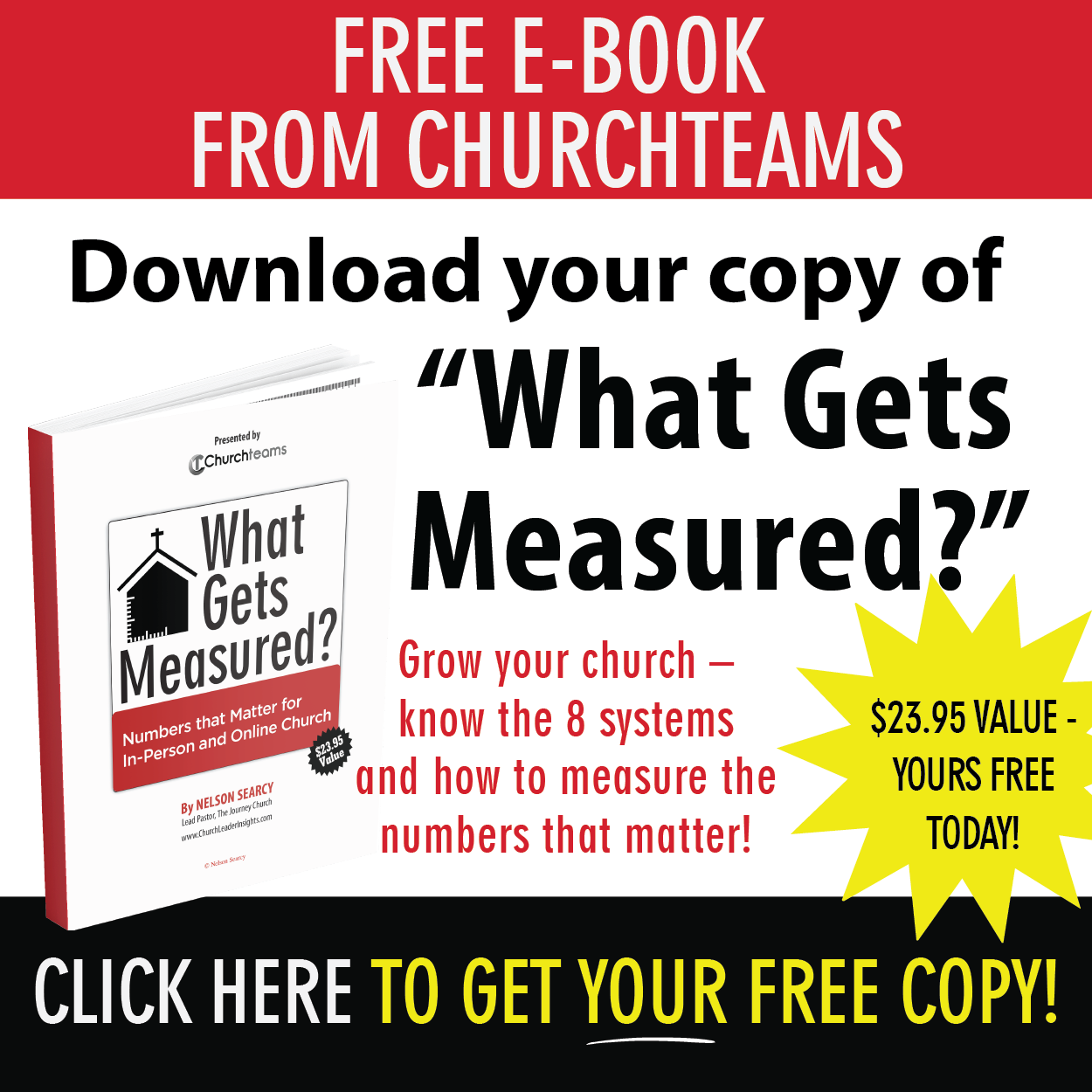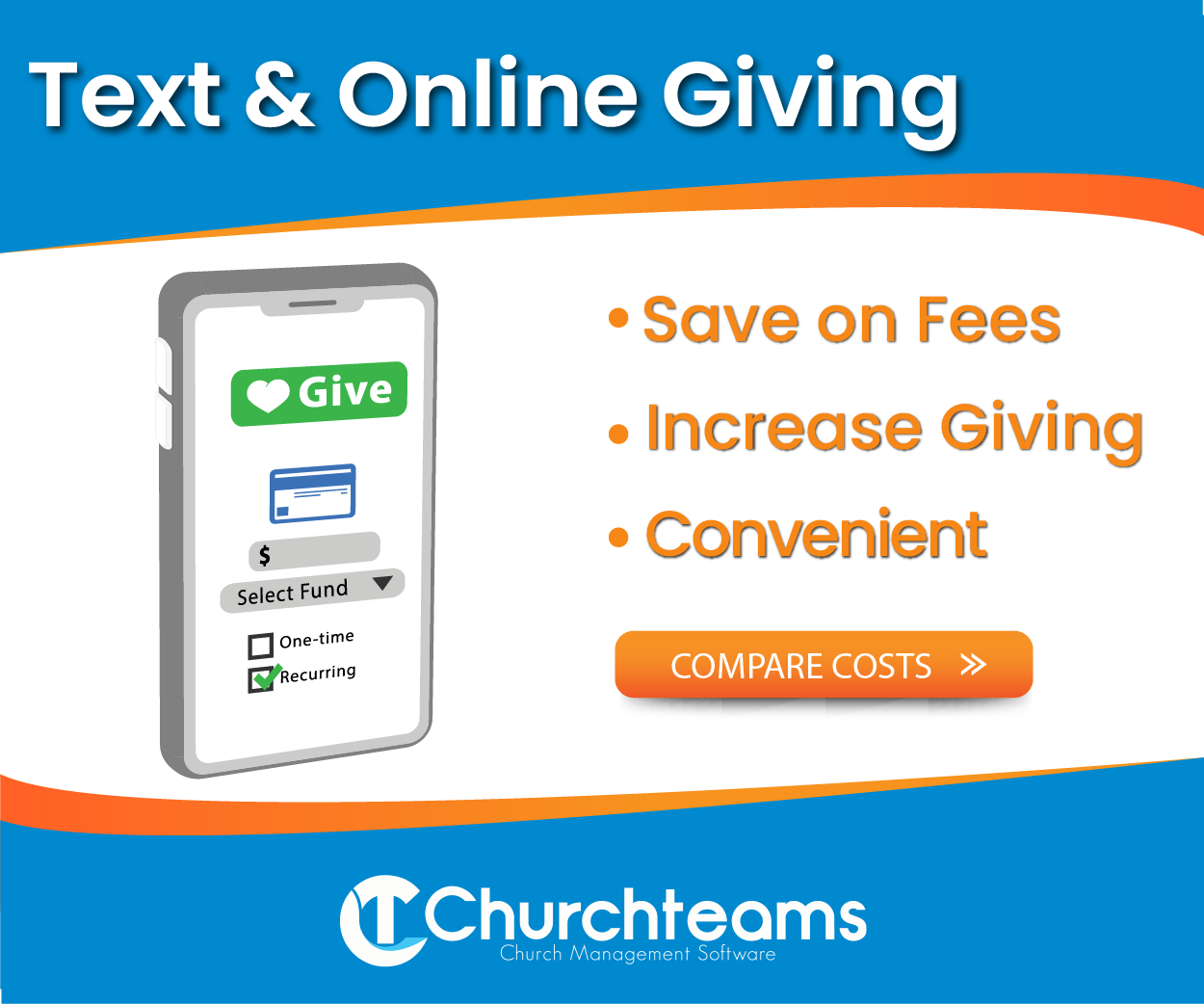 Here are five important guidelines to align your pastors and staff on the use of Churchteams, or your church management software: (1) Learn the language, (2) Be a team player, (3) Get in the game, (4) Don't litter, and (5) Join the huddles. As you implement them you will see significant improvement in your ministry process, communication, and feedback.
Here are five important guidelines to align your pastors and staff on the use of Churchteams, or your church management software: (1) Learn the language, (2) Be a team player, (3) Get in the game, (4) Don't litter, and (5) Join the huddles. As you implement them you will see significant improvement in your ministry process, communication, and feedback.
In past decades entrepreneurs saw problems in the church and developed software to solve them. Pastors and church staff who managed that problem were excited to get the help they needed and started using that solution-specific software.
Over time churches ended up with data in many different systems. This has led to siloed data that is difficult to connect together and use for anything else.
Software companies like Churchteams saw this problem coming a long time ago, and saw the need to build best-of-class equivalent solutions into a single system. The synergy of these solutions empowers process, communication, and feedback for discipleship and ministry way beyond the possibilities of data residing in solo systems.
To make this potential impact of software a reality today, pastors and church staff need to shift from using software independently based on their preferences to using it collaboratively based on the church's ministry strategy. These five guidelines will help you do that.
- Learn the language. Every software has language based on why and how it was built. Here are some words and definitions that will help you use Churchteams.
- People attributes. General information that stays on a person's profile. (Ex. email address, mobild phone, gender, address)
- Registration fields. Specific form or event registration information unique to that form or event. (Ex. payments, more information, preferences)
- Notes. Open-ended journaling of conversations and tasks for tracking and follow-up. (Ex. guest, pastoral care, prayer, volunteers)
- Church Member types. Defines a person's relationship with the church. Generally this is Guest, Attender, Member, Inactive, Deceased.
- Group profile. Organizing structure for everything that involves 2 or more people. This includes, but not limited to: (1) Bible studies, (2) classes, (3) home groups, (4) volunteer teams, (5) leadership committees, (6) all events including payments, (7) forms, and (8) steps in any process. The group view or layout is like a spreadsheet on steroids.
- Process management is done by using: (1) Attributes to benchmark significant events (Ex. Date Joined Church), (2) Groups as holding tanks (Ex. Guest registration), (3) Notes for individual conversations and follow-up, (4) Templates for standard but customizable emails and texts, and (5) Workflows to automate all of this once you have it established.
- Be a team player. The information you keep offline on paper or in another software is not available to inform or help others on your team. Here are some ways you can empower or bless them by sharing who is on your team and what you are working on. They are likely working with the same people and similar projects.
- Groups and teams. Manage, communicate, schedule, and care for small groups and volunteer teams within the software.
- Events and forms. Use Churchteams registrations for these on your website, social, Text-to-Church, and App.
- Attenders and members. Make it easy for them by initiating what you want them to do with a link on your website or social page, a keyword for them to text, or an email with a customized link to click to respond. These are the best ways for them to give, register, sign-up, check-in, volunteer, update their information, and more.
- Leaders and volunteers. Our App was designed for your staff and most involved members. It is intuitive and easy to install in response to a volunteer invitation or by texting ME.
- Other tasks. If you are doing anything else that involves people, find out if there's a way to do it in Churchteams. For example, we have great solutions to help manage mission trips and meal trains. Your staff, leaders, and members will appreciate the consistency.
- Get in the game. Learning something new is hard especially if you have done something similar in a different way for a long time. Your willingness to learn something new for sake of collaboration honors your team and the mission of your church. Here are some ideas and resources.
- Watch. Ask your Churchteams point person to show you what they do.
- Learn. Login and click on the ? icon in the top right. People learn in different ways, so click on and become familiar with the Knowledge Base, Blog, Meet The Software, Academy Webinars, Facebook Forum, Kick Start Trial, and Support email. Then, pick the resource that best fits your learning style and interests.
- Try. Search for your name from both the dashboard and left menu searches to see your People Profile (1a above). From the menu select Groups & Events then Browse Groups to see how everything is organized (1c above) . The Create card on the Dashboard when you login gets you started with a lot of features.
- Don't litter. One of the biggest challenges with databases, particularly shared databases is that over time they get really messy. We have even developed a process to help churches clean up their database. It's really that bad. So, as you use the database, be considerate of others. Here are some of the common ways staff make their data messy.
- People Attributes. Don't put someone else's data on another person's profile. This typically happens with parent email and phone numbers on kids profiles, or entering your own phone or email when registering someone else.
- Registration Fields. Don't create Registration fields (1b) to collect People Attributes (1a).
- Thoroughly search. Thoroughly search for someone before creating them as a new person especially with check-in and contribution data entry.
- Recycle events. When a recurring (even annual) event is finished, take attendance if you want, then remove everyone from the event (system will keep their history), inactivate the event, then reactivate and edit event and registration details next time. Do the same with small groups and forms.
- See something, say something. If you see people or families that are duplicated or something else that doesn't look right, either take care of it yourself right then, or let the right person know.
- Join the huddles. Church staffs that do a great job of using Churchteams as a team set aside time to talk. This might be during a staff meeting or a special "lunch and learn." Sometimes there are structural things within the software that are better customized after team discussion. Collaborating to change something or even just to better understand any of the points above will help your team execute their mission and strategy more effectively.
Feel free to use or edit these 5 guidelines to help align your staff on the use of Churchteams. If you're not using Churchteams, these ideas might help you put together your own guidelines. Or, if you would like to learn more, join us any week for a Meet The Software Zoom webinar.



